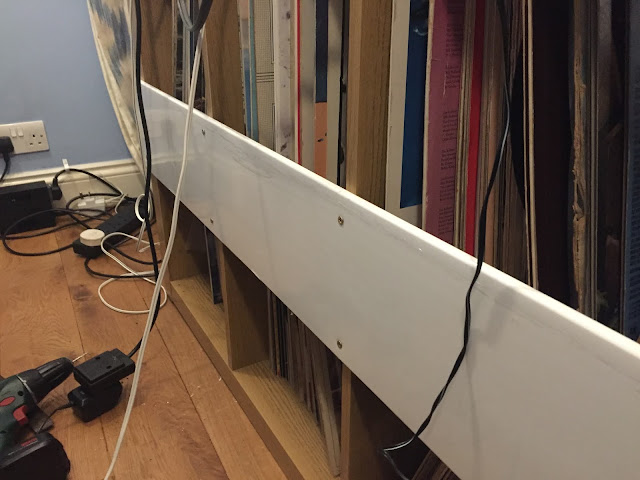One of my first posts in this blog was regarding the servicing of the Pioneer PL12D turntable, and that has proven to be the most popular by a significant margin. The Pioneer PL12D had its competitors, and probably the most popular alternative was the Trio Kenwood KD-1033 turntable. I use both names (Trio and Kenwood) as the company operated under different names in different markets. In the UK they were Trio, possibly because the brand Kenwood was most famous here for food blenders. 95% of a KD-1033 is similar to Pioneer PL12D, and servicing them is very much the same process. Both are belt drive , have an AC synchronous motor, mechanical speed change , a main bearing, sprung top deck and rubber motor mounts. the KD-1033 uses a different type of anti skate mechanism, employing a thread and weight. The plinth is shallower with an internal cross brace. One aspect that is different is the design of the main bearing, and servicing it is a little harder than a PL12D. The ...
 |
| The inevitable problem, too many records. Turntable and amplifier on top |
The system comes flat packed and uses bolts and dowels to hold the system together. If you follow the instructions the system is strong and should not collapse. You can augment the joints with PVA wood glue for extra strength.
My turntable sits on top of an EXPEDIT 2x4 cabinet, laid along the long side, with some felt feet to support it from the floor, and you can use KALLAX in the same way. It's been great but has two problems I wanted to address :
1) Because the system has no back panel, the records can be pushed too far back.
2) While the structure is strong and fairly rigid, there was some lateral movement. With heavy equipment on top, I found that if I nudged or knocked either top side, this allowed a degree of sideways sway in the unit which would cause my turntable to wobble. It's a Thorens deck with a suspended sub chassis, and while immune to most vibration, doesn't like this kind of sudden sideways movement. To be precise the rectangular shape of the unit can slightly become a parallelogram, if shoved. The unit was put together correctly with the internal bracing shelves the correct way round, and with glue along seams, everything is tight. It's just a consequence of the type of construction system used, and is only an issue if you have a turntable resting on it
So I'd been thinking about how I could add additional bracing to stiffen the unit. I found some plastic board that had been used for some roofing soffits, though any hardboard or plywood should work.
My speakers sit on two seperate KALLAX 2x1 units as stands , quite close. I was concerned that if I used a single piece of board to cover the entire back of the EXPEDIT, it might resonate . Hence I decided to apply a central brace spanning both the top section of the lower row and the lower section of the upper row. This braces the unit laterally , stops the records from sliding too far back AND does not create a large "drum skin" on the back of the unit.
I cut the spare piece of plastic board, which is approx 5mm thick, light but rigid laterally. I screwed this to the back along the centerline. I used a fine drill bit to drill pilot holes and short Philips screws to hold it in place. You are drilling into the end pieces of the IKEA unit, which are hollow , so long screws are not necessarily better. Once in place I added additional screws that went through into the vertical dividers. This was easy to do by eye, but I found I couldnt easily repeat this with the horizontal central shelf, so rather than mess it up I left that. 10 screws in total , 2 at each end and 2 for each of the 3 vertical dividing shelves.
 |
| Plastic cross brace, secured at ends and at each vertical. |
Once in place this made a big difference to the slight lateral movement, it was much more rigid. Also this prevented the records from sliding too far back. Inspired by this success, and as I had the unit out and my tools to hand, I also added corner L-shaped brackets at each of the 4 corners.
 |
| 4 steel corner brackets for extra bracing |
Now there is no detectable lateral movement and my turntable seems far more solid . I should add that the unit rests on a solid concrete floor, so was only ever susceptible if knocked. Were I to have hollow or suspended floors , the original problem would have been worse, and this solution may be even more useful

Comments